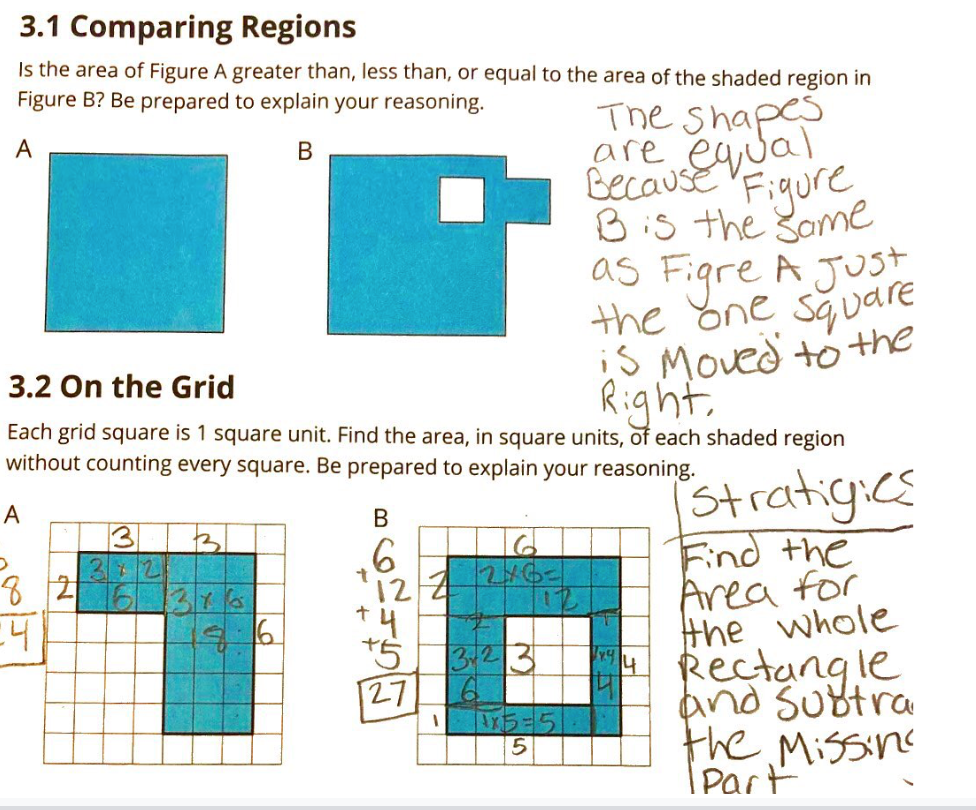Growing up we usually think we are either a math person or not a math person. But, in preparing for this year I saw a picture that said ‘How to be a math person: Step 1: Do math Step 2: Be a person’ and I really started to look at math differently.
I’ve been teaching science for the last 7 years. At the end of this past school year our Assistant Principal told my team that, because of student numbers, we would be a three-person team for this year. She then asked if I would teach three math sections and one science. She said that she liked the inquiry I’d implemented in my science classes and was hoping I could bring that into the math classes.
Two weeks later I was sitting in a training for the county’s “new math curriculum.” I thought that meant we were going to learn about some new standards we would need to teach. I didn’t realize it was a whole new program. At the training, we were told that we had to follow the Illustrative Mathematics curriculum as written and couldn’t add anything. This made me nervous. The year before, our Language Arts Department had adopted a very scripted curriculum. I had been looking forward to teaching math similarly to how I taught science: showing students how topics pertain to real life, and engaging in project-based learning (PBL). A feeling of dread swept over me as I felt all my creativity was being take away.
I began looking at all the resources online. As I began to dig into the lessons, I found something that changed my whole way of thinking about IM. Everything I’d wanted to do inquiry-wise is built into the lessons. I never liked when the teachers stood in front of the class and told the kids exactly what they needed to know. I like when the students explore and discover things for themselves—and that’s exactly what the IM lessons do. I began to really get excited about putting IM into action.
As the beginning of school neared, I started to get super nervous. To help organize my materials, I’d made a google team drive for grade 6 math and had started a folder for Unit 1. In the drive I’d put slides (with the warm-up and student-facing task), practice problems, and a lesson in a different template for each unit. So, for the first day’s lesson I made sure I had the correct slides and the lesson pulled up and I made labels for each student’s workbook.
The first day went really well! I loved the discussion the students had around the warm-up and activity. I didn’t know 6th graders could think that way about math! Moving from science to math I thought I’d be looking at number answers and multiple choice, but, through the kids’ writing and discussions, I’m actually getting a glimpse into how how they are thinking about math.
One thing that I’m having to be okay with is students not totally “getting it” after a lesson. It may take a few lessons for them to “get” the concept, and that’s okay. There are several opportunities for students to deepen their conceptual understanding and to work on their procedural fluency. The lessons leading up to that are so important because the kids are learning the “why” behind the concept.
Here are a few examples of my students wrestling with the mathematical ideas:

This student used tracing paper to work on 3.1. My students have really embraced the Geometry Toolkit to enhance their learning of the concepts. They’re using so many different strategies.
During this lesson we had talked about the characteristics of parallelograms. I liked how this student used each of the characteristics we talked about to describe why those three figures were not parallelograms. To find the area of a parallelogram, she decomposed and rearranged: “If you take the triangle off the right, and move it to the left, you make a 9 by 5 rectangle. 9 ? 5 = 45.” To prove another shape to be a parallelogram, she wrote “I know that E isn’t a parallelogram because it only has 3 sides, and opposite angles aren’t equal.”
Next Step
In the two weeks I’ve been doing the IM 6-8 Math curriculum, it’s been a lot of prep getting to know each lesson and basically going day-by-day, but I’m sure it will get easier as time goes on. One thing that has been so beneficial is using social media to connect with people about IM 6–8 Math. In these groups, people from all over share ideas, resources, and things that have worked for them. You can join in on the conversation using Twitter’s hashtag #LearnWithIM.
